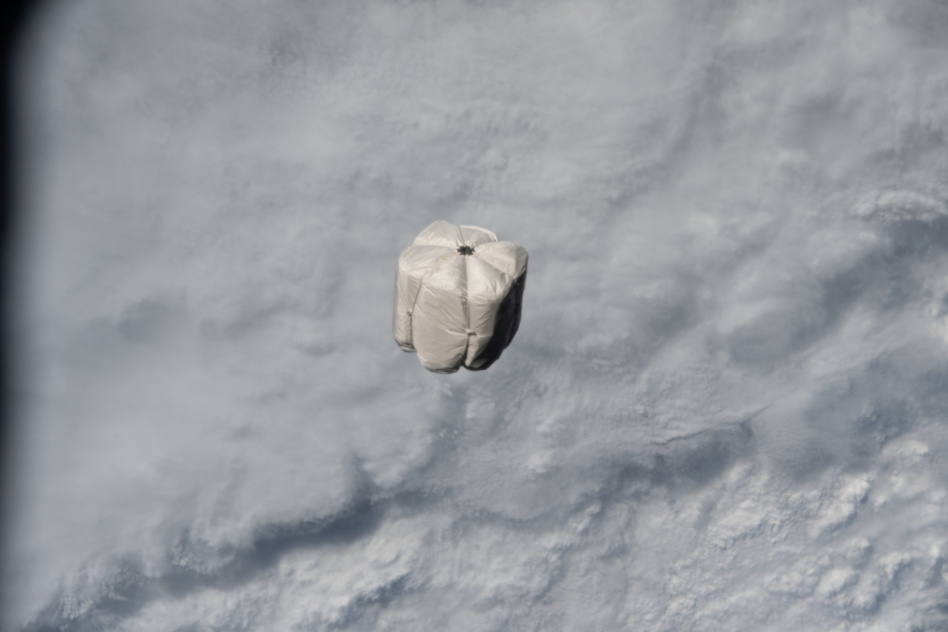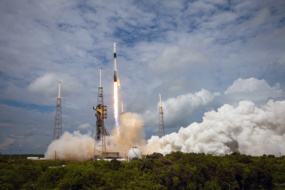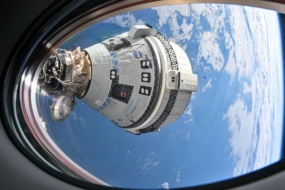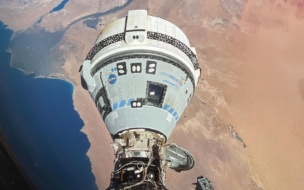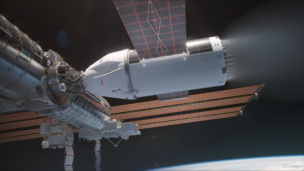Earlier this month, astronauts disposed of ~172 pounds of trash using a completely new method: sending it out of the commercial Bishop Airlock. Working with Houston, Nanoracks cycled its Bishop Airlock, ejected a specially designed trash bag, and voila, the ISS crew had less waste to worry about.
“The first full end-to-end cycle was a great opportunity to demonstrate the commercial…interaction and how that can continue to be a positive thing for everyone,” Nanoracks Airlock Program Manager Cooper Read told Payload.
- Trash is typically disposed of via Cygnus cargo vessels. This new airlock method could provide a more sustainable, efficient disposal mechanism.
- Astronauts can fill a special waste container mounted within Bishop Airlock with up to 600 lbs of trash.
- In the first test, astronauts packed the trash bag with items ranging from packing materials to dirty clothes.
- For any ESG-inclined readers out there…Nanoracks’ orbital trash bags burn up upon atmospheric reentry. We Earthlings need not worry about astro-trash raining down on our heads.
Bishop Airlock’s backstory
Operation Take Out The Trash (Payload’s unofficial working title) represented the first full open-close cycle of Bishop. According to Nanoracks, Bishop offers 5x the current volume of what can be moved in and out of the ISS. It can support up to 144U of payloads simultaneously (1U = 10cm x 10cm x 10cm).
Bishop is the “first commercially funded element” added to “the ISS stack,” Read noted. The bell jar-shaped airlock launched on a SpaceX resupply mission in Dec. 2020 and was commissioned in February 2021. Since then, “all of the core systems have been operating nominally,” Read said.
Key Bishop Airlock design elements
- Bishop can support spacewalks, satellite deployments, and payload hosting.
- It has external hosting capabilities and a “pretty universal mounting capability,” Read said, with six external sites. The same standardization approach extends to Bishop’s racks, lockers, and electrical interfaces.
- With soft-stowed configurations and pressurized hosting opportunities, the module is also poised to make “payload developers’ lives easier.”
- Bishop Airlock can support experiments in partial pressure environments. Nanoracks can “pump it down to a pressure so it’s not in a vacuum,” potentially allowing users to simulate a lunar or Martian environment for experiments.
- The airlock opens up commercial use cases and scientific experiments not previously feasible because they might have been a “crew hazard,” Read said.
Start small, then ramp up
Nanoracks and parent Voyager Space Holdings are “in talks with multiple other companies, public and private” to use Bishop Airlock, Read said. And next year, NASA will begin SEAQUE, a quantum computing demo hosted on Bishop.
Nanoracks has gained loads of flight heritage by iterating over time. It “started small, then ramped up,” Read said, graduating from cubesat deployers to locker-sized platforms inside the ISS to a “small external platform on the Japanese-exposed facility” to Bishop.
Bishop will eventually detach from the ISS and join Starlab, a free-flying LEO outpost owned and operated by Voyager and Lockheed Martin. “There are lots of things we’ve learned along the way that will help us with Starlab and building up that station,” Read said.
